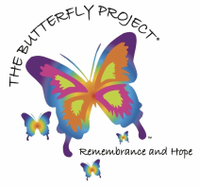|
Written by Joe Fab 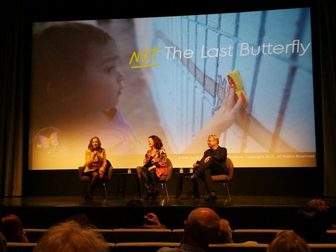 NOT The Last Butterfly post-film discussion, with Liebe Geft (left) and Cheryl Rattner Price (center). NOT The Last Butterfly post-film discussion, with Liebe Geft (left) and Cheryl Rattner Price (center). On May 3, NOT The Last Butterfly had a sneak preview at L.A.’s Museum of Tolerance. The audience (a full house!) was warmer and more responsive than we could ever have hoped, laughing and crying in all the right places and giving Cheryl and me a standing ovation when we took the stage for a post-film discussion with museum director Liebe Geft. I was thrilled that so many of my L.A. friends were able to come and share the evening with me. There’s really nothing like seeing a film you’ve worked on lighting up the big screen. This was a first-ever experience for Cheryl, who was ecstatic as she had every right to be. Even though I’ve enjoyed this thrill before, it never gets old. And it’s even more exciting to hear from audience members how a film has affected them. In this case, the feedback was emotional, it was generous, it was touching. Before and after the film, audience members painted ceramic butterflies which have since been mounted on a memorial wall in the museum. Cheryl and Jan have hoped that a film about The Butterfly Project would expand awareness and lead to more groups joining the project and creating their own permanent installations. Based on the first audience’s response, I think that wish is already coming true. 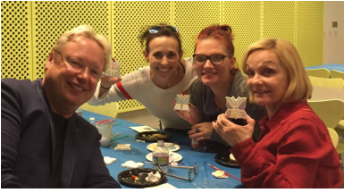 Among my L.A. pals who saw the film and painted butterflies were Cathy Rigby McCoy (right) and her daughter and daughter-in-law (center). Among my L.A. pals who saw the film and painted butterflies were Cathy Rigby McCoy (right) and her daughter and daughter-in-law (center). Cheryl and I are immensely grateful to Ms. Geft and her staff, who went all out to make sure that everything was just right for the screening in the museum’s beautiful Peltz Theatre. Please visit The Butterfly Project website and add your support. There’s still a long way to go toward the goal of 1.5 million ceramic butterflies in installations around the world in memory of the 1.5 million Jewish children murdered in the Holocaust. Originally posted by Joe Fab on his website www.joe-fab.com.
7 Comments
Written by Joe Fab 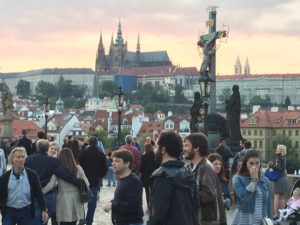 The Prague Castle in the distance, as seen from the Charles Bridge over the Vltava River. The Prague Castle in the distance, as seen from the Charles Bridge over the Vltava River. Last February, I wrote about consulting on a documentary called NOT The Last Butterfly and mentioned interviewing Ela Weissberger, a Holocaust survivor who had been imprisoned at the Terezin concentration camp, located in what is now the Czech Republic. Ela’s story proved to be so compelling and so perfectly related to the themes of the film, that Cheryl Rattner Price (the superhuman force behind the film and the project on which it is based) took a great leap of faith, deciding that we would take Ela back to the camp and film her there. As if that wasn’t wonderful enough, Cheryl asked me to direct the shoot. 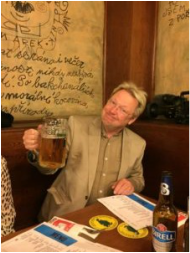 We stayed in Prague during the shoot, since Terezin is about an hour’s drive away. Our crew was all Czech, organized for us by DP Michal Krecji. We scouted the camp one day and shot there for two days, with additional filming in Prague. Before I go on, let me say that I loved being in Prague. It’s a classic European city, perfect for walking. Our first day there was a free day, so I went off by myself exploring, visiting Wenceslas Square (with a hat tip to my late friend Larry Shue, whose play Wenceslas Square is a must-see), having lunch in an outdoor café, and admiring the architecture and vast public spaces. There were other walking opportunities, as well as a chance to tour the magnificent Prague castle. One evening, Ela took us all to her favorite nightspot, U Kalicha. When it came to food and drink, I played it safe — onion soup and some vegetables, having read the menu and been put on guard by the very perplexing item called “Baked Knee”. Happily, the Czech Republic is home to one of my favorite beers, Pilsner Urquell — I drank it wherever we went! The entertainment was a somewhat tipsy accordion player — when he played, Ela and I danced the polka. 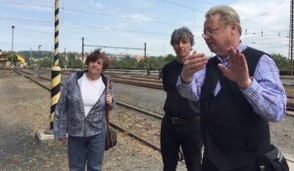 Describing to Ela and Michal how we would shoot Ela, remembering when she arrived at the station to board the train for Terezin at age 11. Describing to Ela and Michal how we would shoot Ela, remembering when she arrived at the station to board the train for Terezin at age 11. Filming with Ela was an even greater experience than I anticipated. Perhaps our primary location in Terezin was the building where Ela lived while there, room number 28 in building L410, whose appearance today belies the fear and misery it held during the reign of the Third Reich.Yet as Ela spoke about her experiences, I could feel the pain and suffering she and so many others lived through. Of 15,000 children who passed through Terezin, only 100 survived. Ela pointed out each place, each item that triggered memories. She showed us the door to the room where her mentor, the artist Friedl Dicker-Brandeis, lived with her husband. Friedl taught Ela and other children to express themselves with drawings and paintings, helping them hold onto their sanity and emotional identities through an early form of art therapy. It was a remarkable experience for me to visit this place with this woman who went on to create a full life after she was liberated. Originally posted by Joe Fab on his website www.joe-fab.com. Written by Joe Fab 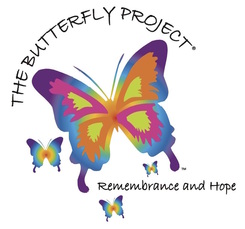 For about a year now I’ve been consulting on a documentary tentatively entitled NOT The Last Butterfly… I’m working with Cheryl Rattner Price, a ceramic artist based in San Diego, who launched a project at the San Diego Jewish Day School with her friend and colleague Jan Landau. The Butterfly Project grew out of Jan’s desire to find a new way to teach about the Holocaust — one that would be instructive but not overly alarming to children. She had the idea of making 1.5 million butterflies in memory of the 1.5 million Jewish children murdered in the Holocaust. When Jan reached out to Cheryl, they decided that the butterflies should be made of clay and that painting them would be an activity that could be a gateway into the subject for youngsters. Although she wasn’t a filmmaker, Cheryl saw the value in documenting the project, and she had been filming various events and activities for several years when I heard about what she was doing. It turns out that Paper Clips had been a prime motivator to both Jan and Cheryl. Now Cheryl was looking at how she could take all the footage she’s accumulated and tell The Butterfly project’s story. She asked me if I ever help first-time filmmakers make their movies, and I told her that I do. So I joined the project as a consultant. I can’t speak highly enough about Cheryl as an open and willing collaborator. Making any film is challenging; making one’s first film is even more so as it stretches one’s ability to learn while doing. I think Cheryl and I have just the right chemistry for traveling together on this journey that so far has led us from evaluating the archive of footage she had accumulated to now seeing a real possibility of a documentary that might become more than the documentation of an outstanding educational effort. A series of interviews I conducted with Cheryl in San Diego last summer added to the substance of the film. In addition to Cheryl and Jan, I interviewed Susan Goldman Rubin and Ela Weissberger. Susan is an author who has written about Ela and her imprisonment at the Terezin concentration camp. Terezin is probably best known as the place where young Pavel Friedman wrote his iconic poem The Butterfly before being sent off to Auschwitz, where he was killed. This film has become a real joy and a wonderful learning experience for me. I’m very excited about what’s coming next! Originally posted by Joe Fab on his website www.joe-fab.com. |
Copyright © 2017-2023 by In Our Hearts Productions. All Rights Reserved.
